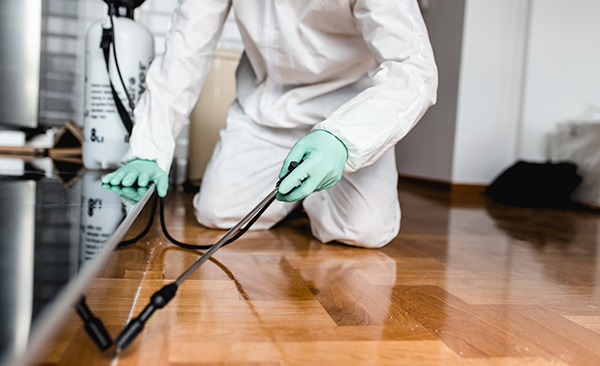Professional Solutions for Pest Problems from Pest Control Lockhart
Professional Solutions for Pest Problems from Pest Control Lockhart
Blog Article
Checking Out Infestation and Treatment Approaches in the World of Parasite Control
The landscape of parasite control includes a myriad of challenges, particularly as invasions of typical family parasites proceed to progress. By incorporating preventive steps with innovative monitoring strategies, such as Integrated Insect Monitoring (IPM), home owners can better secure their atmospheres.

Usual Household Vermin
When it pertains to managing our living spaces, comprehending typical house pests is essential. These parasites not only interrupt our convenience yet can likewise posture health and wellness dangers and damages residential property. One of the most common home insects include ants, roaches, rats, termites, and bed pests.
Ants, commonly seen foraging in kitchens, can infect food and develop big colonies. Rodents, including mice and rats, can trigger architectural damages and carry conditions like hantavirus and salmonella.
Acknowledging the signs of these insects, such as droppings, nests, or bite marks, is essential for very early intervention (Pest Control Lockhart). Correct sanitation techniques, securing access factors, and maintaining a clutter-free atmosphere are reliable preventative procedures. By recognizing these usual house bugs and understanding their habits, house owners can take aggressive steps to minimize infestations, making certain a much healthier living atmosphere
Understanding Parasite Infestations
Parasite invasions can intensify quickly, transforming a small inconvenience right into a considerable trouble if not attended to immediately. Common variables adding to infestations include inadequate hygiene, architectural susceptabilities, and seasonal adjustments that drive pests inside.
Recognizing the kind of bug is vital, as various species display different habits and reproductive prices. Rodents might develop nests in hidden locations while pests like cockroaches prosper in moist atmospheres. Early discovery usually depends upon identifying indicators such as droppings, nibble marks, or uncommon noises, which can indicate an issue prior to it becomes serious.
Ecological problems likewise play a crucial duty in pest proliferation. Warm, humid climates can promote the rapid development of parasite populations, while changes in landscape design or construction can inadvertently produce helpful environments. Routine assessments and preventative steps are vital to minimizing the risk of invasions. An enlightened technique to recognizing these dynamics prepares for reliable bug administration methods in the future.
Therapy Techniques and Techniques
Efficient therapy methods and techniques are important for reducing bug problems and restoring a risk-free atmosphere. A diverse approach is often best, including chemical, organic, and mechanical strategies tailored to the specific insect and the extent of the infestation.
Chemical treatments include the usage of pesticides and herbicides, which can successfully get rid of parasites. Appropriate application and adherence to safety guidelines are crucial to lessen dangers to people and non-target microorganisms. Integrated Bug Administration (IPM) urges the cautious use chemicals as a last hope, relying instead on surveillance and limit levels to determine intervention needs.
Biological control techniques include presenting natural killers or parasites to decrease bug populaces. This technique is increasingly prominent, particularly in farming setups, as it promotes ecological sustainability.
Mechanical approaches, such as catches and barriers, give prompt relief from insects without presenting chemicals. Options consist of sticky traps for pests or physical obstacles for rats.
Ultimately, the option of treatment method should take into consideration the particular pest, the setting, and get more potential impacts on human wellness and communities. A balanced combination of these approaches can efficiently take care of problems while promoting long-lasting bug control remedies.
Preventative Measures for Residence
Proactively attending to insect concerns prior to they rise is essential for maintaining a healthy and balanced home atmosphere (Pest Control Lockhart). Implementing efficient preventive measures can dramatically decrease the likelihood of problems, eventually securing both your building and health

Proper landscape design additionally plays a critical duty in prevention. Maintaining hedges and trees cut away from your home reduces the possibilities of pests finding their means inside your home. Moreover, ensure that drainage systems are working effectively to stop standing water, which can reel in insects and various other bugs.
Finally, regular assessments are recommended. Routinely inspecting for indicators of bug activity enables early intervention. By taking on these preventive steps, home owners can produce an atmosphere that is much less hospitable to bugs, thereby enhancing their total lifestyle and reducing the requirement for extensive parasite control interventions.
Industrial Parasite Control Methods
An extensive strategy to commercial parasite control is important for services intending to preserve a risk-free and sanitary setting. Effective techniques entail a combination of regular examinations, staff member training, and the implementation of Integrated Bug Management (IPM) techniques.
Normal assessments make it possible for early discovery of insect task, allowing for prompt treatment. Organizations should develop a routine schedule for these assessments, concentrating on see this page risky locations such as kitchens, storeroom, and waste disposal sites. Worker training is similarly crucial; personnel should be informed on the signs of insect problems and the importance of reporting them quickly.
Implementing IPM methods aids reduce parasite problems sustainably. This consists of habitat modification, such as sealing access factors and minimizing mess, as well as using all-natural deterrents before turning to chemical treatments.

In addition, teaming up with a qualified pest control provider ensures access to expert expertise and advanced therapy alternatives. This collaboration can lead to personalized parasite control plans tailored to the specific requirements of business, minimizing threats and enhancing general effectiveness. Eventually, a positive and educated strategy fosters a pest-free setting, safeguarding both public health and wellness and business reputation.
Conclusion
In conclusion, effective bug control requires a thorough understanding of typical family pests and their behaviors, coupled with targeted treatment techniques. Executing preventive steps alongside therapy techniques such as Integrated Parasite Management and biological control enhances the ability to alleviate problems.
Report this page